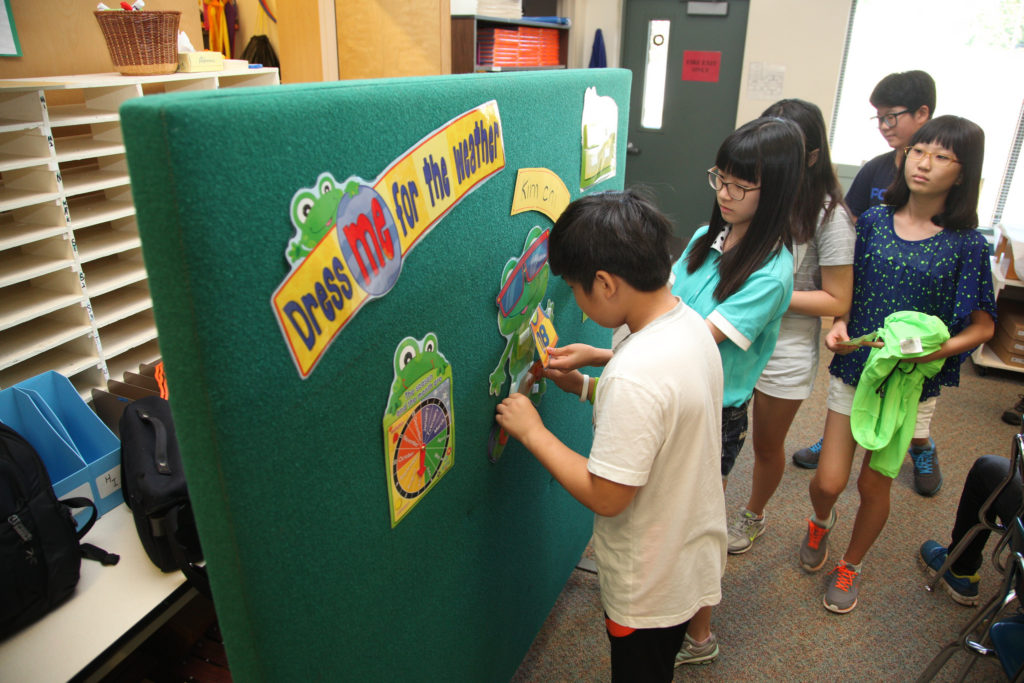The Peninsula
Chinese, English, and What They Might Mean for U.S. Influence on the Korean Peninsula
Published June 20, 2017
Category: South Korea, Culture

By Nathaniel Curran
The average South Korean receives approximately 20,000 hours of English instruction by the time they finish their education, and in 2013, Korea had an estimated 17,000 hagwons (private academies) teaching English. This means there are more English academies in Korea than McDonalds in the United States (impressive, considering that Korea’s population is 1/6th that of the U.S.).
Increasingly, however, hagwon advertisements tout the benefits of learning Chinese, rather than English.
The increased popularity of Chinese is reflective of geopolitical shifts that were almost unthinkable even just a few decades ago. After all, English has played a linguistically unparalleled role in South Korea since liberation in 1945. In fact, South Korea’s first presidential administration, under Syngman Rhee, was known as the “translators’ government,” reflecting both Rhee’s comfort in English as well as the outsize role of the U.S. in post-war South Korea.
The importance of English in South Korea is indicative not merely of American economic hegemony over the past fifty years, but also of the military alliance between South Korea and the United States. That military alliance has proceeded alongside the U.S.’s role in South Korea’s economic development, first in the form of direct aid and investment, and later as a prime destination for the exports that fueled South Korea’s economic rise.
Now, however, China is Korea’s largest trading partner. In addition, China could prove a crucial asset in dealing with the vexing issue of North Korea, in contrast to the U.S.’s failed efforts over the past fifteen years. President Moon has vowed a softer approach toward North Korea than his recent conservative predecessors and China would be an invaluable ally in enticing Pyongyang to the negotiation table.
The changing geopolitical winds are also reflective of the fact that China is now the number one destination for Koreans studying abroad, while the number of Koreans studying in the U.S. has declined slightly over the past several years.
All of this has to be worrisome to U.S. analysts who are undoubtedly fearful of South Korea falling under the sway of China. President Moon’s decision to suspend the THAAD installation after rebukes from China may be yet another sign that Korea is starting to look towards China rather than the United States.
Uncertain Implications
While Chinese hagwons have been become far more visible in recent years, it’s less clear if there have been accompanying significant reductions in expenditure on English. According to Korean government statistics, household expenditure on English learning fell slightly last year, but making any decisive claims about the private education industry is difficult in light of the extreme competition and regulatory-circumvention that plagues the industry.
It’s also still unclear what the Moon administration’s position is regarding China and the United States. Recently ousted President Park Geun-hye pushed for a reduction in the stress on English and an increased focus on Hanja (Chinese characters) in Korean schools. Nor will the Moon administration’s language policy necessarily influence actual practice; the Chun Doo-hwan administration banned private tutoring in 1980, but the practice continued, underground.
Furthermore, it appears that Chinese may not actually be replacing English, but is instead being tacked on in addition to English. If that’s the case, Chinese language learning may merely be reflective of over-credentialization in Korea, as employees increasingly seek to distinguish themselves from their English speaking peers through mastery of Chinese. This generation of Koreans already boasts the highest levels of tertiary education in the OECD, and mastery of Chinese could give job applicants a leg up in Korea’s ultra-competitive job market.
Either way, looking at what’s being taught at hagwons in Gangnam isn’t the worst way to read geopolitical shifts on the Korean peninsula. Given the eclectic variety of other activities that children could be learning at hagwons, the decision to learn Chinese is telling of which way Koreans (or Korean parents at least) think the wind is blowing.
Nathaniel Curran is a PhD student at USC’s Annenberg School of Communication and a 2017 COMPASS Summer Fellow. The views expressed here are the author’s alone.
Photo from Jinho Jung’s photostream on flickr Creative Commons.
